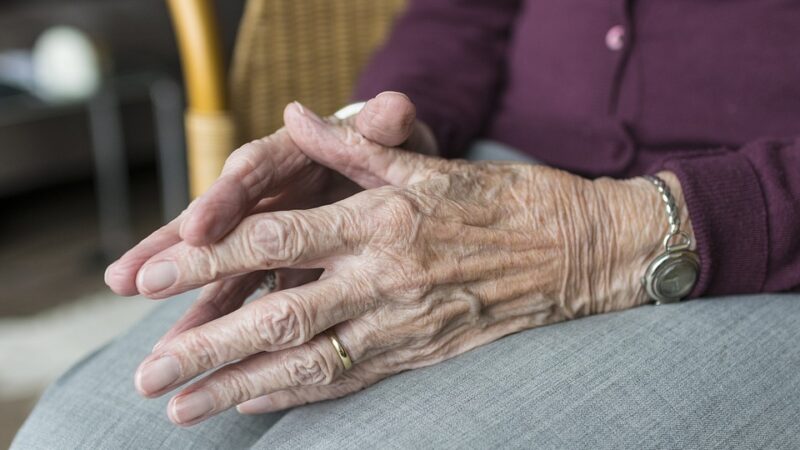Here's how we can pay for a vital rise in the state pension next year.

First they deprived the over 75s of free TV licence, now they are shooting at the state pension.
Press briefings suggest that the UK government is considering inflicting even more poverty on current and future retirees by abandoning the triple-lock.
The triple-lock was introduced in 2011 by the Conservative-Liberal democrat coalition government to check the decline in the real value of the state pension. Under the triple-lock, the state pension rises by a minimum of either 2.5%, the rate of inflation or average earnings growth, whichever is largest. In 2019, the Conservatives election manifesto said “We will keep the triple lock”.
Depending upon the circumstances, the UK’s 12.7 million retirees receive a state pension of between £134.25 and £175.20 per week – i.e. in the range of £7,000 and £9,110 a year. In comparison, the national minimum wage for someone over the age of 25 is £8.72 per hour i.e. around £17,000 a year. Many retirees are living on almost half of the minimum wage.
Poverty pensions
The UK state pension is around 29% of average earnings, the lowest amongst industrialised nations, compared to the average of 63% in OECD countries. The proportion of retirees living in severe poverty in the UK is five times what it was in 1986.
In 2019, the UK paid £95.5bn (2018, £93.7bn) in state pensions out of an estimated gross domestic product (GDP) of £2.21 trillion (2018, £2,144bn), which is around 4.3% of GDP. It is forecast to hit 4.6% by 2022-23. In contrast, Germany allocates 10% of its GDP to state pension.
The UK requires employees to save for their retirement through work related pension schemes. Inevitably, low wages result in low savings for private pensions. For poorly paid employees, the state pension is likely to be the biggest source of income in their retirement. Any erosion now will have consequences for future generations.
Behind the rumours
The trigger for possible abandonment of the triple-lock is the staff furlough scheme, under which the government is paying 80% of wages, up to a maximum of £2,500 a month, for around 9 million employees. Many are getting only 80% of their wage.
When the scheme ends, and employees return to their jobs, the average earnings could dramatically increase. Some think the average earnings could increase by around 18% over a period of time and trigger a big rise in state pension. It is claimed that suspending the triple lock could save the government £10bn over 48 months. To keep this in perspective, last year the government provided a subsidy of £7.1bn to privatised rail companies.
A big rise in the state pension would reduce pensioner poverty. An estimated two million pensioners live in poverty and removal of the triple-lock will increase the numbers.
Instead of alleviating poverty, neoliberals are asking how the state pension bill will be paid – though they said little about the state printing money (quantitative easing) to bail out banks or handing out billions to businesses for the coronavirus pandemic.
How to pay for it
The state can use quantitative easing to rescue people from poverty too, but that will not go down well with neoliberals. Here are some answers in their own terms.
The state pension is paid out of the National Insurance Contributions (NIC) which are accumulated in the National Insurance Fund (NIF). At 31 March 2019, the NIF had an accumulated surplus of £30bn.
In 1973, the government agreed to annually supplement the NIC by a contribution of 18% and check the decline in the real value of the state pension. The supplement was gradually phased out between 1981 and 1988. The policy change deprived the NIF of £271bn by 2014 and is closer to £300bn by now. The government used the funds to give tax cuts to corporations and the rich. Any recompense would help to alleviate pensioner poverty.
HMRC admits that it fails to collect around £34bn-£35bn each year due to tax avoidance, evasion and errors. Other studies put the amounts at between £58.6bn and £122bn a year. A focus on tax avoidance/evasion would raise plenty to provide decent pensions.
The government gives around £40bn a year in tax relief on pension contributions. Most of it goes to individuals paying income tax at the rate of 40% and 45%. By reducing the relief to 20%, the basic rate of income tax, the government can ensure that everyone gets relief at the same rate and also raise £10bn for redistribution.
Other options include reversing the tax cuts given to corporations and individuals earning more than £150,000, levying a higher rate of VAT on luxury goods, a financial transaction tax and a wealth tax. It could levy high carbon taxes on polluters.
Rather than reducing state pension increase, the government needs to ensure that eradication of poverty and a decent pension are part of the Covid recovery plan. The state pension must not be less than the national minimum wage. This is achievable and some funding options are outlined above.
People power needs to ensure that the state does not continue to consign retirees to poverty.
Prem Sikka is Professor of Accounting at University of Sheffield and Emeritus Professor of Accounting at University of Essex. He is a Contributing Editor to LFF and tweets here.
To reach hundreds of thousands of new readers we need to grow our donor base substantially.
That's why in 2024, we are seeking to generate 150 additional regular donors to support Left Foot Forward's work.
We still need another 117 people to donate to hit the target. You can help. Donate today.



